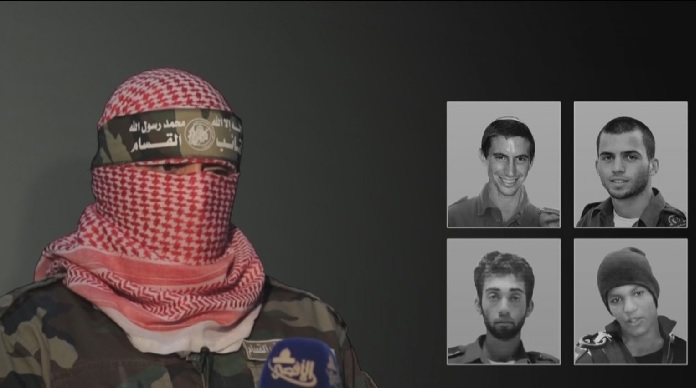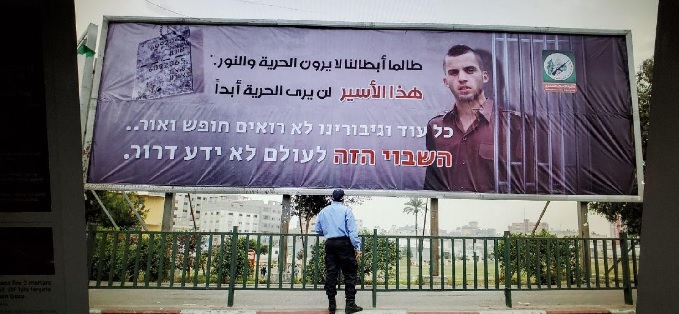
On Wednesday, the spokesperson for the military wing of Hamas stated that Israelis in their captivity were injured during airstrikes conducted by Israel’s Air Force. The message about the injury of its captives may be closer to psychological warfare than truth.
Via the al Qassam Brigades’ Telegram channel, their spokesperson, Abu Ubeida, delivered a message to the Israeli government about captives held by the militant group in the Gaza Strip:
Under Netanyahu’s great deceit against the Zionist entity, the Zionist prisoner in Russian prisons [Naama Issachar] was released on a drug issue, while the enemy leaves behind with his captors who sent them to the Gaza Strip since 2014, without regard to their unknown fate.
We in al Qassam Brigades declare the truth that we have hidden since the aggression of May 2019 on the Gaza Strip when the enemy bombed the civil and security buildings and other places, a number of the enemy prisoners were directly injured and we are reserved to reveal their fate in this stage. We promise our hero prisoners to do everything we can to free them in every way.Ubeida is referring to the two bodies of IDF soldiers and two Israeli citizens held in the Gaza Strip since the start of operation Protective Edge in 2014.

It is believed that Hadar Goldin was shot and killed by an al Qassam Brigades militant in the city of Rafah during the 2014 war. His body was reportedly taken into a tunnel and has been in Hamas possession ever since.
A second IDF soldier, Oron Shaul, was killed in the Shuja’iyya neighborhood when the armored personnel carrier he was in was struck by an RPG-29. It is believed that members of Hamas’ al Qassam Brigades took the body after the attack.
On Sept. 7, 2014, Avraham Mengistu was seen walking at Zikim beach which lays north of the Gaza Strip. Mengistu reportedly reached the security fence that separates Israel and the Gaza Strip and climbed over it. IDF soldiers attempted to stop him but Mengistu refused to cooperate. Mengistu reportedly ended up in Hamas custody and has not been seen since.
In 2015, Hisham al Sayed, like Mengistu, willingly entered the Gaza Strip through a hole in the security fence and has not been heard from since.

Hamas has more incentive to not allow any information to be released about its captives so to force as many concessions out of the Israeli government that it can.
By publishing statements regarding the Israeli prisoners, it keeps the Israeli public’s focus on the captives in Gaza. This in turn will maintain pressure on the Israeli government to reach a deal to release the bodies of the IDF soldiers and the living Israeli citizens.
The goal of releasing all Palestinian prisoners in Israeli jails has always been at the heart of the Palestinian resistance movement since it began decades ago. In the 1960s and 1970s, multiple airplanes were hijacked by Palestinian militant groups as a way to force Israel to free Palestinian prisoners.
Hamas’ goal is to repeat the success of the Gilad Shalit deal which saw over 1,000 Palestinian prisoners released in exchange for one IDF soldier. The fallout from the deal, which saw the return of militant activity for some of the released prisoners, has caused trauma in Israeli society. In April 2014, a shooting attack in Hebron killed one Israeli and injured several of his family members. One of the perpetrators, Ziad Awad, was released in the Shalit deal.
It is doubtful that Hamas will see a repeat of what happened with the Shalit deal. It is more likely to see some of those recaptured after the Shalit deal freed again, which has been a demand of Hamas since prisoner exchange negotiations started.
But if any concrete deal will happen between Israel and Hamas, it will have to wait until a new Israeli government is formed after the elections in early March.
 Eurasia Press & News
Eurasia Press & News

